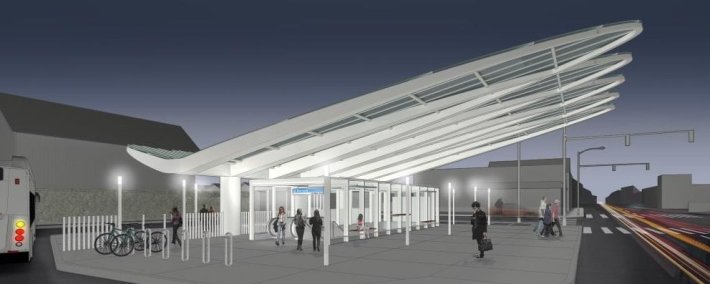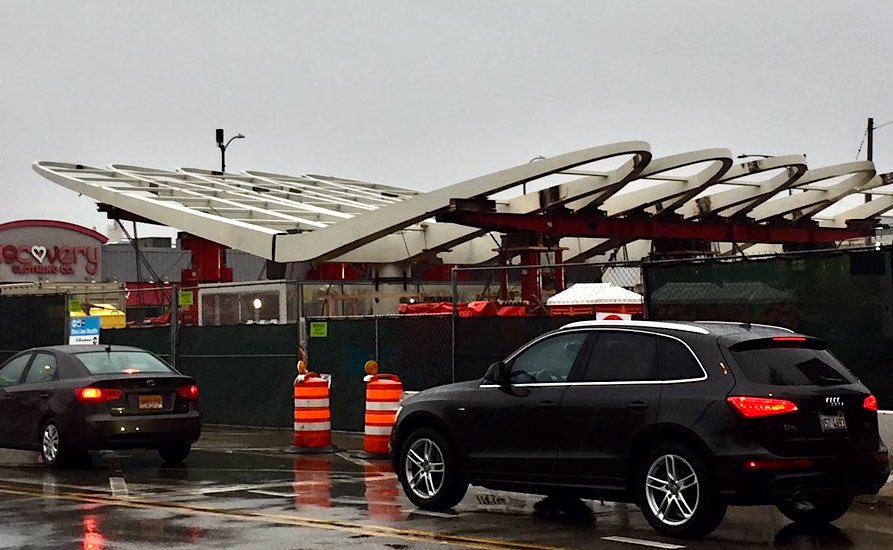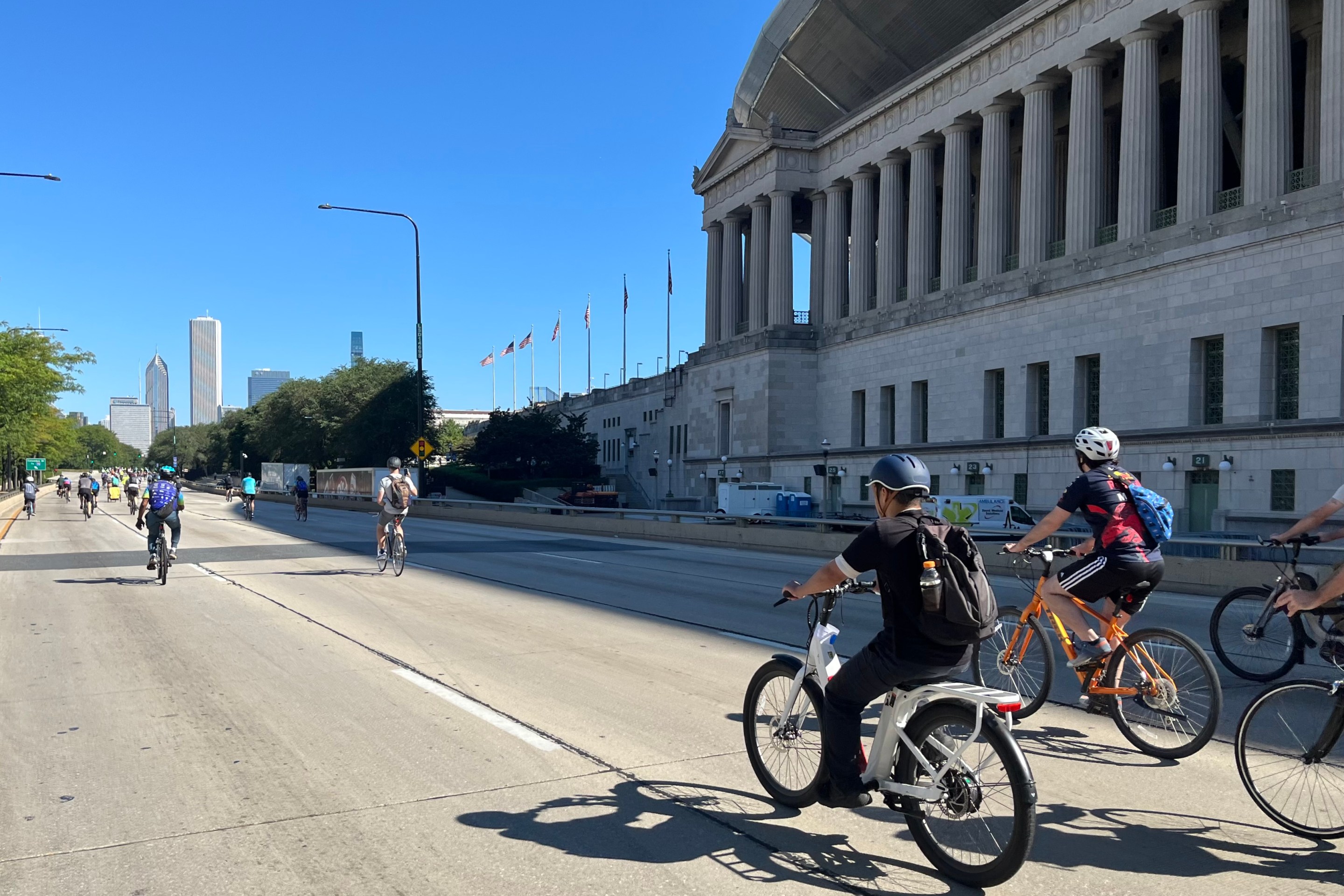In October 2016 the city announced upgrades to the Blue Line’s Belmont stop costing up to $15 million. The plans called for adding a Jetsons-esque weather canopy and permanently adding prepaid bus boarding to the station, plus other improvements. However, installing an elevator to make the stop accessible to wheelchair users and others with mobility challenges wasn't part of the immediate plan. The same was true for several other stations along the O'Hare branch that were being upgraded as part of the CTA’s Your New Blue initiative, and many residents had a problem with those omissions.
When I asked CTA spokesperson Tammy Chase about the elevator issue, she noted responded that the agency had recently announced its All Stations Accessibility Program to make every 'L' stop wheelchair-friendly within the next 20 years. But Chase added that the physical constraints posed by decades-old rail infrastructure make expansion to accommodate elevators difficult and expensive in many cases.
“Making an existing station [Americans With Disabilities Act] compliant sometimes requires more than just the addition of an elevator,” Chase wrote. “Depending on the layout of a station, multiple elevators would be required and platforms would also need to be widened/lengthened among other things.” She said that making the Belmont station fully accessible was estimated to cost an additional $55 to $75 million.
At the time I wrote that it was "somewhat understandable" that the CTA was choosing to make short-term improvements instead of waiting until a lot more funding becomes available. "Still, it’s a shame that residents with disabilities may have to wait as long as two decades until they gain access to a facility that’s supposed to serve all Chicagoans."
This weekend I snapped a photo of the under-construction Belmont Blue station and tweeted out with a link to my 2016 post. University of Chicago doctoral student Matthew Borus tweeted this response:
I have to say, it’s honestly disappointing to read your closing statement that it’s “somewhat understandable” that the CTA is continuing to exclude disabled riders, John. #CripTheVote
— Matthew Borus (@MatthewBorus) March 10, 2019
Borus argued that I shouldn't have taken the CTA's cost estimate and explanation at face value, and that I should have checked in with an accessibility advocate for a different perspective, which were reasonable criticisms.
So today I contacted the disability rights group Access Living Chicago to get its take on the elevator issue. Advocacy manager Adam Ballard said that he trusts that the CTA's cost estimates is accurate, and he understands that there are other major barriers to making stations accessible, such as the need to acquire adjacent properties for elevator shafts.
"I'm not going to pretend that [the Belmont situation] isn't frustrating," Ballard said. "But I'm less frustrated about it than I would have been a few years ago, before the ASAP plan existed. We do put our hope in ASAP because it lays out a blue print for accessibility."

Former Access Living board members Jack Catlin, an architect, and Kevin Irvine, a CTA board member, were involved in drafting the document. "They definitely are familiar with our perspective and know what our community wants and needs," Ballard said. "Overall, the CTA is on the same page with us. Our main frustration is the timeline, so we really need to make sure that whenever transit funding becomes available, especially capital funding, ASAP is at the top of their list. Hopefully we can shorten that timeline."
Ballard added that he was frustrated when the North and Clybourn Red Line station was rehabbed several years ago, using private sponsorship funds from Apple Computer, which has a store next door but the project didn't include an elevator. "The CTA made sure that the renovations wouldn't trigger the ADA requirements." According to the law, if an upgrade project chiefly involves cosmetic improvements, rather than major structural changes, wheelchair access isn't required.
While Ballard suspects that the CTA took a similar approach to Belmont and other Your New Blue stations that aren't getting elevators in the near future, he says he considers that strategy to be less problematic now that the ASAP plan is in place.
Reached this afternoon CTA spokesperson Jon Kaplan reiterated the CTA's previous talking points. "As you noted in your 2016 article, there are challenges in making existing, decades-old infrastructure accessible, especially with a system as old as the CTA," he said. "One of the biggest challenges at a station like Belmont are the constraints of being a subway, which requires additional construction considerations and costs. However, despite these constraints and others, CTA is committed to making every rail station accessible – including Belmont - as outlined in our ASAP Plan."
Kaplan added that the Belmont rehab is slated for completion by June 21, 2019.






